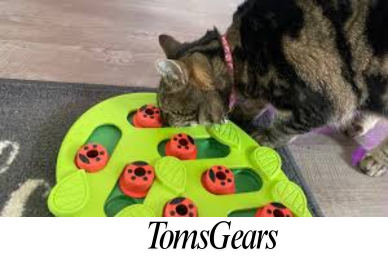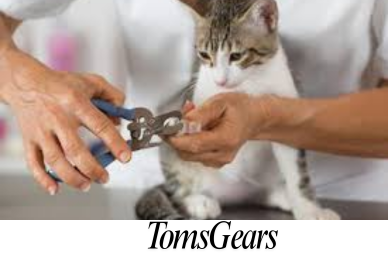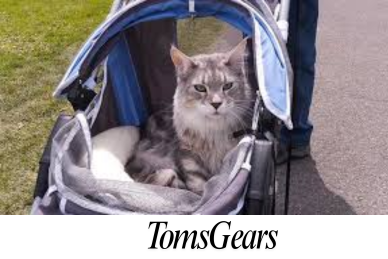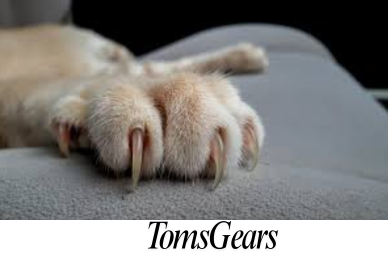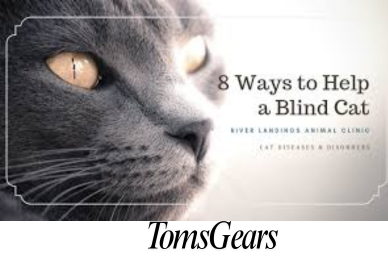Why Is My Cat So Big but Not Fat | General Discussion
Have you ever looked at your cat and thought, “Wow, you’re quite a big kitty!” only to realize that they don’t actually seem overweight? This can be a puzzling situation for many cat owners. While obesity is a common issue among our feline friends, some cats simply have a larger frame or muscular build that gives the illusion of size without excess fat.
In this article, we’ll talk about the various factors that can contribute to a cat appearing big but lean. From breed characteristics and growth phases to body composition and underlying health conditions, we’ll help you understand why your feline companion might be rocking that “big and beautiful” look without carrying extra pounds.
Why Your Cat Might Appear Big Even Without That Excess Weight
The Role of Breed and Genetics
Not all cats are created equal when it comes to size. Just like humans, different feline breeds have varying standards for height, weight, and overall stature. Some kitties are naturally petite, while others are designed to be on the larger side.
The mighty Maine Coon, for instance, is known for its impressive size, with males often weighing between 15 and 25 pounds when fully grown. Other large cat breeds include the Ragdoll, Norwegian Forest Cat, and Siberian Forest Cat. These majestic felines were selectively bred over time to develop their substantial frames and muscular builds.
Even within the same breed, genetics can play a significant role in determining a cat’s overall size and body composition. Mixed-breed cats may inherit size traits from their parent breeds, resulting in a diverse range of potential sizes and shapes.
Age and Growth Phases
If you’ve ever had a kitten, you know how quickly they can grow and seemingly double in size overnight. Kittens go through several growth spurts during their first year, which can make them appear disproportionately large for their age.
Additionally, some breeds take longer to reach their full adult size, with growth continuing until they are 3 to 5 years old. During this extended growth phase, a young cat from a large breed may appear excessively big compared to their smaller, fully-grown counterparts.
Muscularity vs. Fat
One of the key factors in distinguishing a big but not fat cat is understanding the difference between muscle mass and body fat. While excess fat can indeed contribute to a cat’s overall size, a muscular build can also create the illusion of a larger frame without the associated health risks of obesity.
Certain cat breeds, such as the Abyssinian and Egyptian Mau, are known for their naturally muscular physiques. Additionally, an active lifestyle that includes plenty of playtime and exercise can help cats develop lean muscle mass, even if they don’t appear to be particularly large.
To determine if your cat is muscular or overweight, it’s essential to look beyond their overall size and pay attention to their body shape and composition.
Cat Body Shape and Composition Facts that Contribute to That Bulky Look
Even if your cat appears big, their body shape and composition can provide valuable insights into whether they are carrying excess fat or simply have a larger frame.
One characteristic that can contribute to a cat’s perceived size is the presence of a primordial pouch, also known as a belly pouch. This is a natural fold of loose skin around the abdomen that serves as a protective layer for internal organs during hunting and jumping. While it may resemble a fat pocket, the primordial pouch is a normal feature and does not necessarily indicate obesity.
Additionally, some cats have a larger skeletal frame that gives the impression of size without excess fat. Their overall bone structure and musculature can create a more substantial appearance, even if their body condition is within a healthy range.
It’s also important to consider the role of fur length in influencing a cat’s perceived size. Longhaired cats may appear bulkier or fluffier than their shorthaired counterparts, even if their actual weight and body composition are similar.
How to Assess Your Cat’s Weight
While visual cues can provide valuable insights, the most accurate way to determine if your cat is at a healthy weight is through regular check-ups with your veterinarian. During these visits, your vet can perform a thorough physical examination, including assessing your cat’s body condition score (BCS) and weighing them.
At home, you can also perform a simple rib and waist test to evaluate your cat’s body condition. In a healthy cat, you should be able to feel their ribs beneath a thin layer of fat, and they should have a visible waist when viewed from above.
It’s important to note that ideal weight ranges can vary depending on your cat’s breed, age, and overall size. For example, a healthy Maine Coon may weigh between 15 and 25 pounds, while a healthy domestic shorthair may fall within the 8 to 12 pound range.
When to Be Concerned
While a big but not fat cat may simply be the result of breed characteristics or body composition, there are instances where an abnormal size or weight fluctuation could indicate an underlying health issue.
Conditions such as hyperthyroidism, diabetes, Cushing’s disease, and certain types of cancer can all impact a cat’s weight and overall body condition. Additionally, as cats age, their metabolisms can slow down, making them more prone to weight gain or loss.
Regular vet check-ups are crucial for monitoring your cat’s health and detecting any potential issues early on. During these visits, your veterinarian can perform necessary tests and provide guidance on maintaining your cat’s ideal body condition through proper nutrition and exercise.
If you notice any sudden or unexplained changes in your cat’s weight, appetite, or overall appearance, it’s important to consult with your veterinarian promptly. Early intervention can often help address underlying health concerns and ensure your feline friend remains happy and healthy.
Frequently Asked Questions (FAQ)
How can I tell if my cat is just big-boned or overweight?
Perform the rib and waist test regularly. If you can easily feel your cat’s ribs and see a defined waist, they are likely within a healthy weight range. If you struggle to feel their ribs or their waist is indistinct, they may be carrying excess weight. Consult your vet for a professional assessment.
Can neutering or spaying cause my cat to gain weight?
Yes, spaying or neutering can sometimes lead to weight gain in cats due to changes in their metabolism and activity levels. However, this can be managed through proper diet and exercise. Your veterinarian can provide guidance on adjusting your cat’s caloric intake and ensuring they get enough physical activity.
Is it okay to put my big cat on a diet?
Before making any significant changes to your cat’s diet, it’s essential to consult with your veterinarian. They can evaluate your cat’s body condition, assess their nutritional needs, and recommend a safe and effective weight management plan if necessary.
How much exercise does a big cat need?
Exercise requirements can vary based on your cat’s age, breed, and overall health. However, most cats benefit from at least 15-30 minutes of active playtime or exercise per day. This can include interactive toys, chase games, or even supervised outdoor time (if safe and appropriate).
Can stress or anxiety cause weight fluctuations in cats?
Yes, stress and anxiety can sometimes lead to weight changes in cats. Stress can suppress appetite and cause weight loss, while anxiety or boredom may lead to overeating and weight gain. Addressing any underlying stressors and providing environmental enrichment can help manage these issues.
Remember, every cat is unique, and understanding their individual characteristics, needs, and body composition is key to ensuring their overall well-being. By staying informed, consulting with your veterinarian regularly, and providing a nurturing environment, you can help your big but not fat kitty thrive and maintain a healthy weight for years to come.

